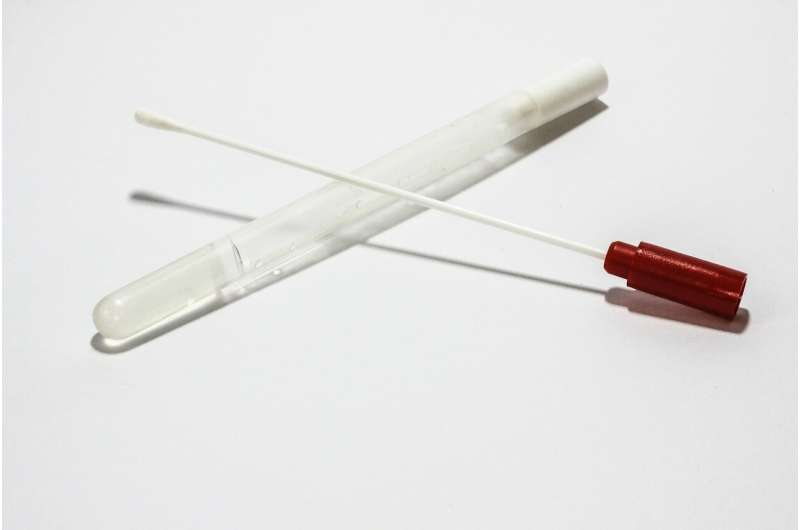Testing for COVID-19 at home


The emergence of a new COVID-19 variant, omicron, has heightened safety protocols and plans to help people stay safe from illness as researchers and experts learn more about the newest strain of SARS-CoV-2. This includes plans to expand access to COVID-19 over-the-counter tests for people to use at home in the U.S.
“We have good evidence that the testing that we’re using to detect patients who have COVID-19 is going to continue to be effective in individuals infected with the omicron variant,” says Matthew Binnicker, Ph.D., director of Clinical Virology at Mayo Clinic.
There are two types of tests approved by the Food and Drug Administration to diagnose current COVID-19 infection: molecular tests (e.g., polymerase chain reaction [PCR]) and antigen tests. Both are done on a nasal swab specimen.
A polymerase chain reaction or PCR test is a test that looks for the virus’ RNA in a patient’s sample. A sample is collected by inserting a swab into a person’s nostril and taking cells from the back of the nose (nasopharyngeal swab). Some lab tests allow for patients to spit into a tube to get a saliva sample. PCR tests are accurate when properly performed by a health care professional, but rapid tests can miss some cases.
Antigen tests detect certain proteins in the virus. Using a nasal swab, antigen tests can produce results in minutes. These tests are faster and less expensive than molecular tests, but there is an increased chance of false-negative results.
“At-home testing is, of course, becoming more common as more testing options for individuals at their home become available. The omicron variant should be detected by rapid antigen tests and other tests—at least that’s what the current data are telling us,” says Dr. Binnicker.
Self-testing kits, many of which are antigen tests, are not failproof and it is possible for a test to give a negative result in some people who have COVID-19 infection.
“The lab-based PCR tests are more sensitive. They’re able to give us a broader window of infection because they can detect lower amounts of the virus,” says Dr. Binnicker. “Yes, the at-home tests are an option but I’m recommending that those be used in closer proximity to a gathering and also that they shouldn’t be used in isolation as a sole way of mitigating risk.”
Dr. Binnicker says they really should be used in combination with masking and distancing, if possible. And, be mindful of when you are going to self-administer the test.
“If you’re going to be performing an at-home test, try to do that the day of the event, because that’s going to give you the best information of whether someone has high amounts of the virus in their system at that time,” Dr. Binnicker says.
Dr. Binnicker says the omicron variant reinforces the importance of COVID-19 vaccination.
Source: Read Full Article